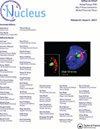AVALIAÇÃO DE PARÂMETROS RELACIONADOS A FIXAÇÃO BIOLÓGICA DE NITROGÊNIO EM SOJA cv. TMG 2165 IPRO PRÉ-COINOCULADA EM DIFERENTES MOMENTOS ANTES DA SEMEADURA
IF 4.5
3区 生物学
Q3 CELL BIOLOGY
引用次数: 0
Abstract
The objective was to evaluate parameters of biological nitrogen fixation in soybean subjected to different treatments: T1 - control without the use of commercial inoculant; T2 - chemical nitrogen fertilization; T3 - commercial inoculant based Bradyrhizobium applied to the seeds on the sowing day; use of commercial inoculant containing Bradyrhizobium and Azospirillum bacteria applied at 0, 7 and 15 days before sowing (DBS), treatments T4, T5 e T6, respectively. In R2, the following parameters were evaluated: number of nodules and dry mass in the main root, secondary roots and total; shoot and total dry mass and nitrogen content in the soot (NCS). In R8, the accumulated nitrogen content in the grains (NCG) was measured. From the results obtained, it can be noted that for the nodulation parameters (nodular number and dry mass) the treatments that stood out were related to co-inoculation (T4, T5 e T6) without statistical difference regarding the period of application of the inoculant. With regard to NCS, there was a greater increase in treatments T4 and T2, which did not differ from each other and presented mean values of 33.84 and 33.23 kg ha-1, respectively. For NCG, T4 stood out with 58.43 kg ha-1, despite having statistical similarity to treatments that used the same inoculant applied to 7 (T5) and (T6) DBS, as well as T2 and T3. It can be concluded that the parameters to biological nitrogen fixation did not suffer a negative influence due to the application of early co-inoculation up to 15 days before soybean sowing.大豆生物固氮相关参数的评价。TMG 2165 IPRO在播种前不同时间预接种
目的是评价不同处理下大豆生物固氮的参数:T1 -对照,不使用商业接种剂;T2—化学氮肥;T3 -商业孕育剂为基础的缓生根瘤菌,在播种当天施用于种子;采用含缓生根瘤菌和固氮螺旋菌的商业接种剂,分别于播种前0、7和15 d (DBS)施用T4、T5和T6处理。R2中评价以下参数:主根、次根和总根瘤数和干质量;干质量、总干质量和烟灰中氮含量。在R8中,测定籽粒累积氮含量(NCG)。从结果可以看出,在结瘤参数(结瘤数和干质量)方面,突出的处理均与共接种(T4、T5和T6)有关,接种剂的施用时间没有统计学差异。在NCS方面,T4和T2处理的NCS增加幅度更大,两者之间没有差异,平均值分别为33.84和33.23 kg ha-1。对于NCG,尽管与使用相同接种剂处理7 (T5)和(T6) DBS以及T2和T3的处理在统计上相似,但T4的接种效果为58.43 kg ha-1。综上所述,大豆播前15天早期共接种对生物固氮参数没有负面影响。
本文章由计算机程序翻译,如有差异,请以英文原文为准。
求助全文
约1分钟内获得全文
求助全文
来源期刊

Nucleus
CELL BIOLOGY-
CiteScore
5.60
自引率
5.40%
发文量
16
审稿时长
13 weeks
期刊介绍:
Nucleus is a fully open access peer-reviewed journal. All articles will (if accepted) be available for anyone to read anywhere, at any time immediately on publication.
Aims & Scope: The eukaryotic cell nucleus is more than a storage organelle for genomic DNA. It is involved in critical steps of cell signaling and gene regulation, as well as the maintenance of genome stability, including DNA replication and DNA damage repair. These activities heavily depend on the spatial and temporal “functional” organization of the nucleus and its integration into the complex meshwork of cellular scaffolding.
Nucleus provides a platform for presenting and discussing cutting-edge research on all aspects of biology of the cell nucleus. It brings together a multidisciplinary community of scientists working in the areas of:
• Nuclear structure and dynamics
• Subnuclear organelles
• Chromatin organization
• Nuclear transport
• DNA replication and DNA damage repair
• Gene expression and RNA processing
• Nucleus in signaling and development
Nucleus offers a variety of paper formats including:
• Original Research articles
• Short Reports
• Reviews
• Commentaries
• Extra Views
• Methods manuscripts.
 求助内容:
求助内容: 应助结果提醒方式:
应助结果提醒方式:


